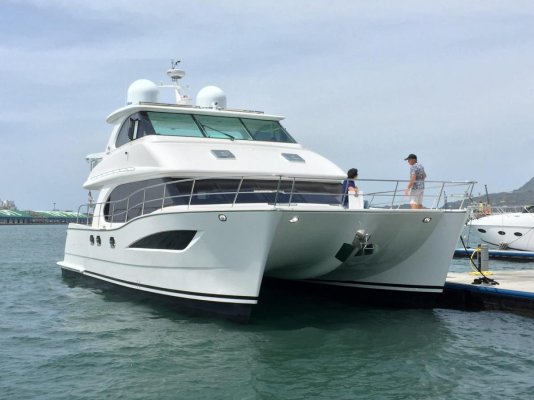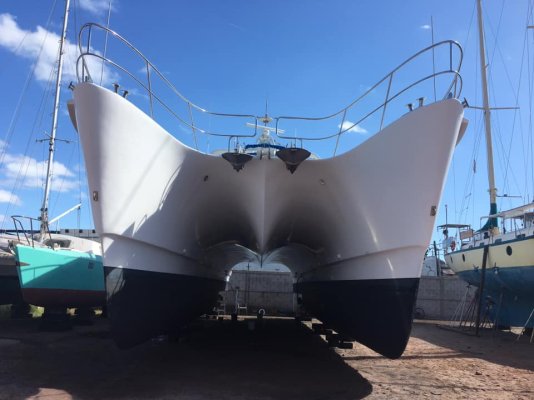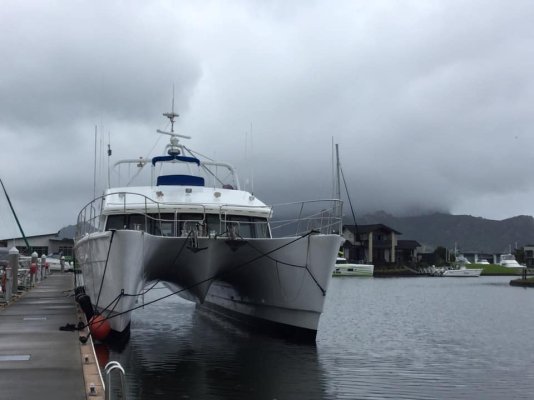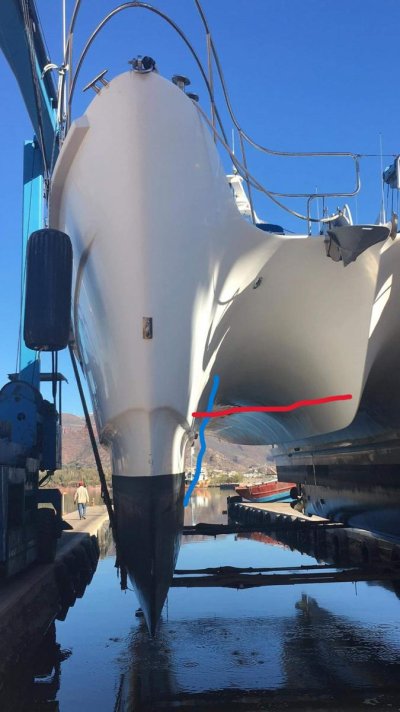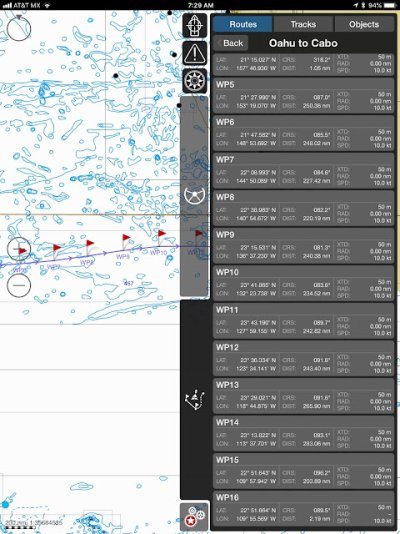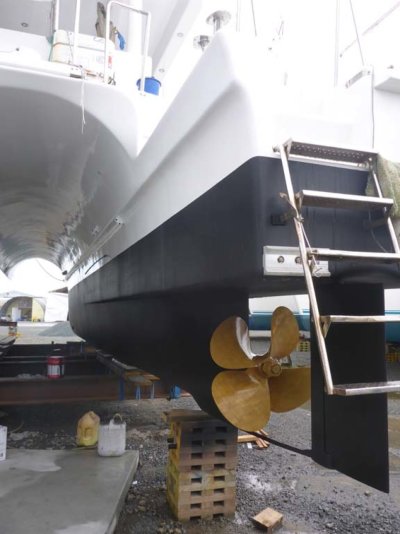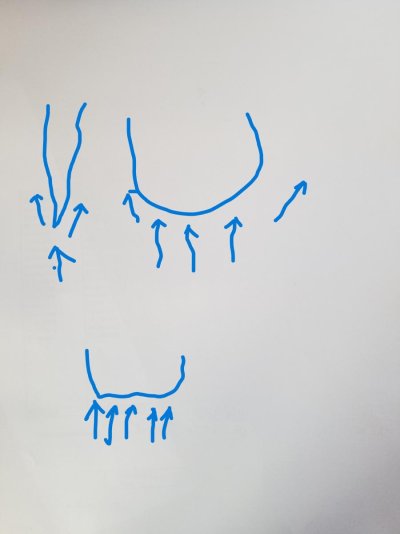Here's the rub: Passagemaking PCs are even more rare than Passagemaking Monohulls. Domino is a one-off, and there are a few others, mostly squirreled away down-under. But there are many, many options on the PC-front for coastal boats, from PDQs, to Leopards, to the Horizon PC I've spent quite a bit of time aboard. Leopards, built in South Africa, are routinely delivered to the Caribbean on their own bottow with deck-fuel. Surprises me, but it's not uncommon. Just something I wouldn't do.
I was unable to find a bow-on picture of my friend's PC52 on haul-out. Somewhere I have it, but can't find it. Its a fairly fine entry as I recall as the bows are tall and flare above waterline, not unlike the general way Domino's hulls are formed. But I also suspect (with no real knowledge) that Cats need to be fairly sizeable - even 52-feet is a bit stubby.
It would not be my first choice to make a serious coastal passage, and planning would depend on how fast I could run. These boats can make 200-mile days fairly efficiently, which puts a lot of legs in play for one, maybe a second overnight.
Not my cup of tea, but good boats. It's good to see people asking about Power Cats. There is a lot to recommend them, even the coastal versions that predominate.
Peter
Peter, I am obviously failing to communicate.
I wish I could find a video of the phenomenon of a Tennant CS hull in a sea way. I will try images.
When a vessel encounters a rising sea in its path I have tried to depict the forces in the line drawing below for three general hull types: my Tennant hull, my round bilged full displacement monohull, and a generic semi-displacement hull.
I have also included another out of water picture of the DOMINO hull to show not just the entry, but the fact that this 'fineness' is continued down the length of the hull nearly all the way aft. The short flat section aft does not impact motion at displacement speeds, but is enough to cause some lift at speeds over 14 knots. (displaning??)
I think you can imagine that a sea can rise and fall under the Tennant hull without moving the boat much since there is little to push on suddenly. Buoyancy increases gently and often the wave has passed before the boat heaves at all.
The full displacement takes more vertical force from the rising water but by design uses weight to resist this to some extent pushing aside large quantities of water which limits speed and efficiency. My 136000# displacement hull will rise and fall in 5-foot seas much more than the Tennant hull but it is a fairly gentle heave in relative terms compared to a lighter flatter hull.
You can imagine the forces on the flatter hull in a five-foot head sea.
I like to say this:
The sea rises and falls around the Tennant hull, while the displacment hull rises and fall upon the sea.
If I had a decent video of us underway you could see the sea level rising and falling above and below the resting water line to the tune of 2-3 feet while the vessel remains almost vertically motionless.
I will be truthful here though; I could never have imagined this on the day I bought this boat. I sort of understood the principle as it had been discussed, but I bought her without knowing for certain what I was looking at.
Tennant is not the only player here and this concept is far from one off. Roger Hill is another example among several others.

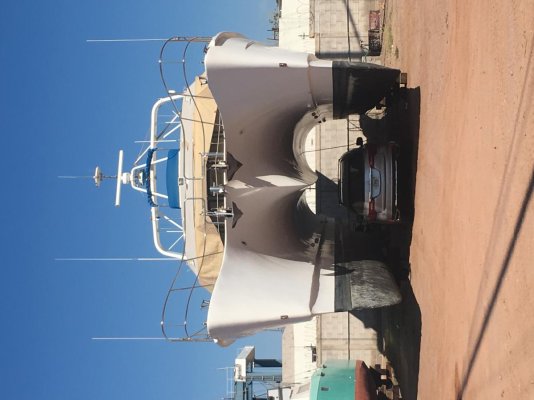
 .
. 